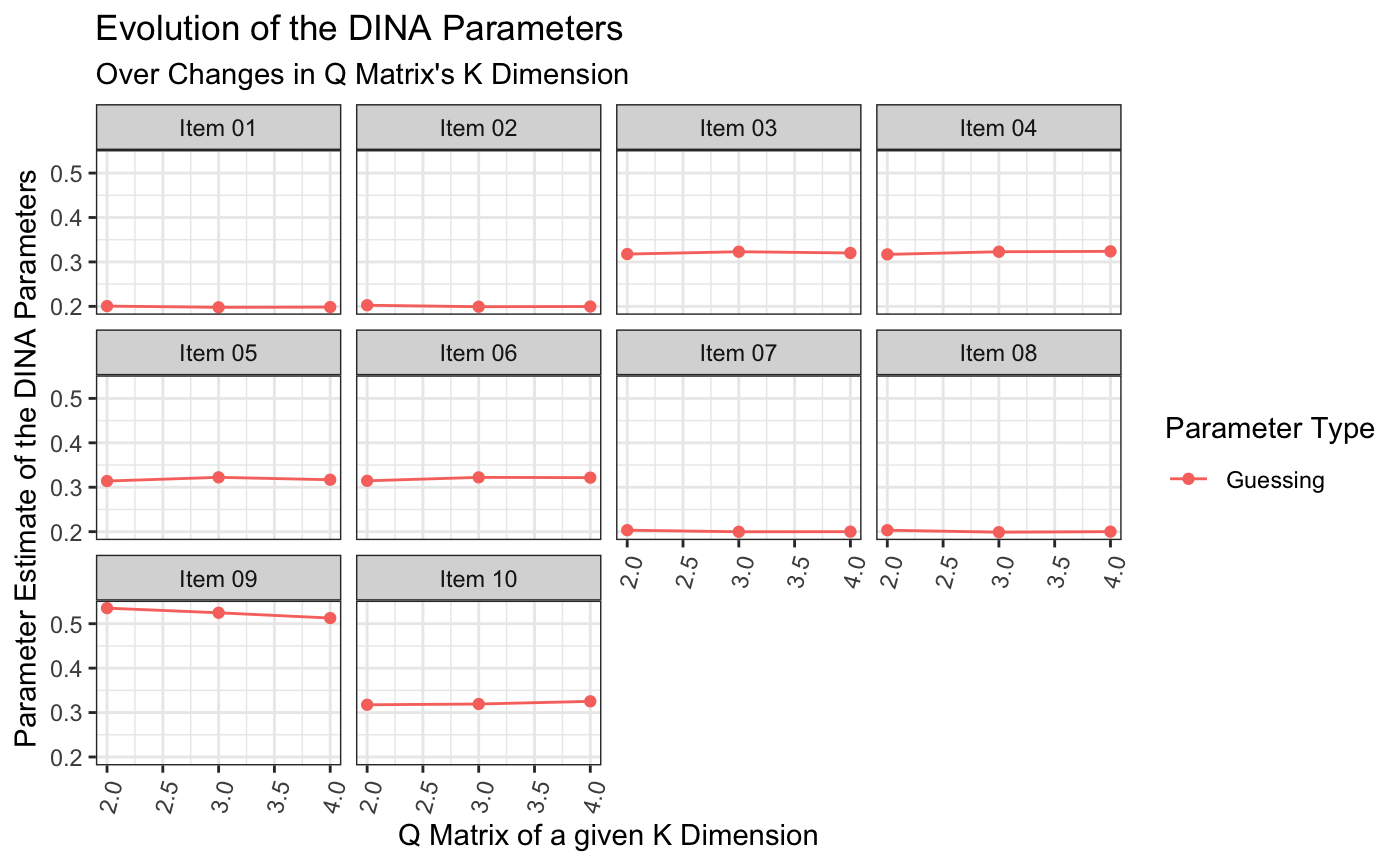Presents either the fitting of model heuristics or the evolution of parameters on a graph
Arguments
Value
A ggplot2 object.
Examples
if(requireNamespace("simcdm", quietly = TRUE)) {
# Set a seed for reproducibility
set.seed(1512)
# Setup data simulation parameters
N = 2 # Number of Examinees / Subjects
J = 10 # Number of Items
K = 2 # Number of Skills / Attributes
# Note:
# Sample size and attributes have been reduced to create a minimally
# viable example that can be run during CRAN's automatic check.
# Please make sure to have a larger sample size...
# Assign slipping and guessing values for each item
ss = gs = rep(.2, J)
# Simulate an identifiable Q matrix
Q = simcdm::sim_q_matrix(J, K)
# Simulate subject attributes
subject_alphas = simcdm::sim_subject_attributes(N, K)
# Simulate items under the DINA model
items_dina = simcdm::sim_dina_items(subject_alphas, Q, ss, gs)
# \donttest{
# Requires at least 15 seconds of execution time.
# Three EDINA models will be fit with increasing number of attributes.
model_set_edina = auto_edina(items_dina, k = 2:4)
# Visualize results results
autoplot(model_set_edina, type = "selection")
# Equivalent to:
model_selection_graph(model_set_edina)
# View model parameters
autoplot(model_set_edina, type = "guessing")
# Or directly call with:
parameter_evolution_graph(model_set_edina, type = "guessing")
# }
}
#> Starting the estimation procedure ...
#> Working on k = 2 ...
#> Time Elapsed: 0.978
#> Working on k = 3 ...
#> Time Elapsed: 1.199
#> Working on k = 4 ...
#> Time Elapsed: 1.451
